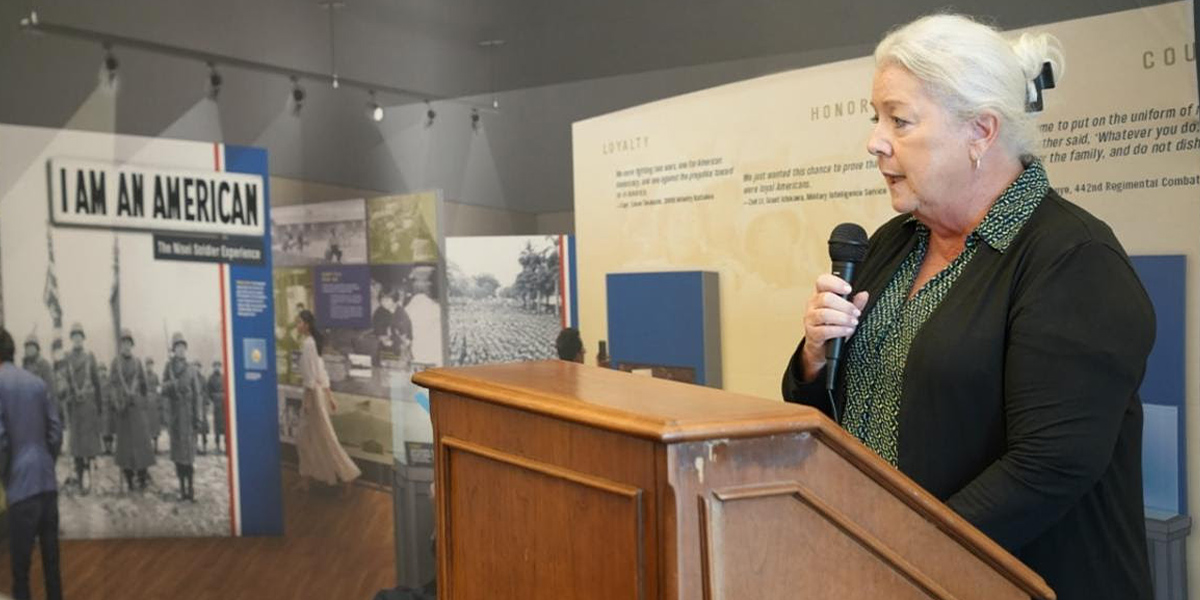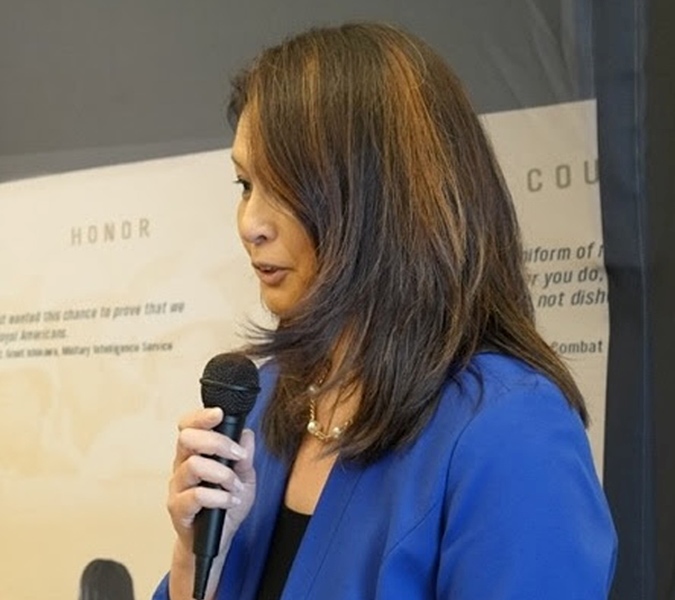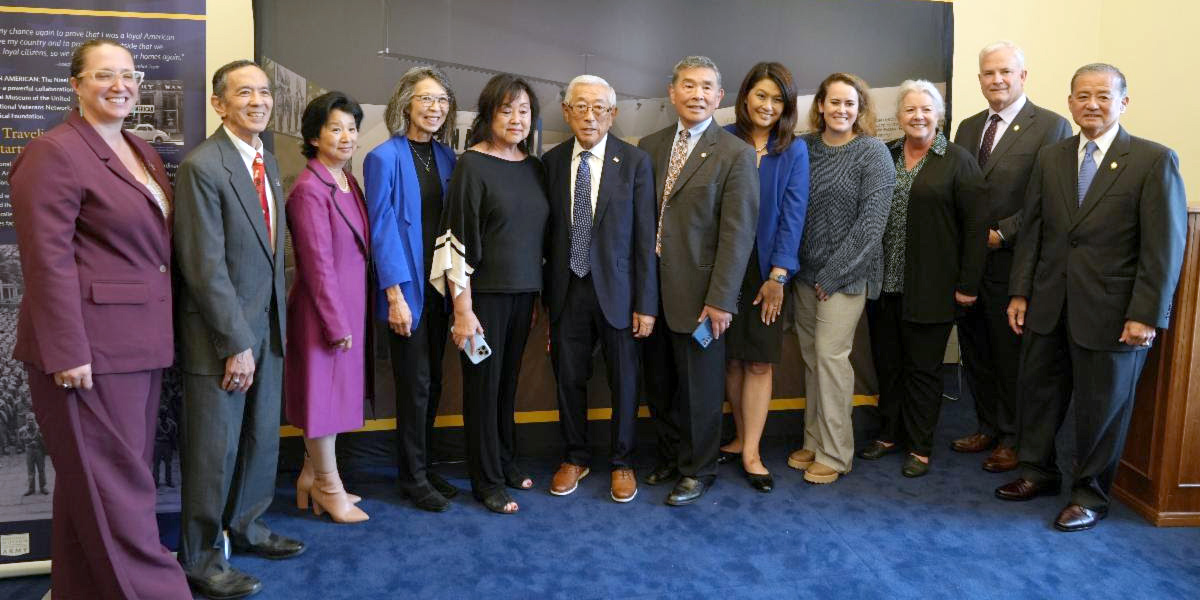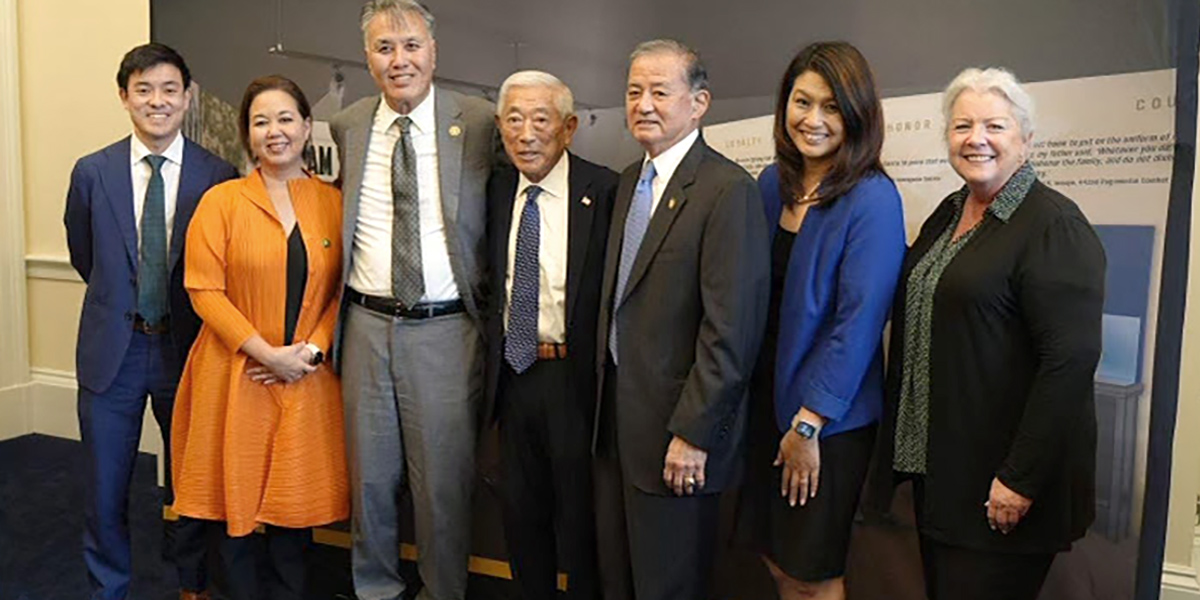
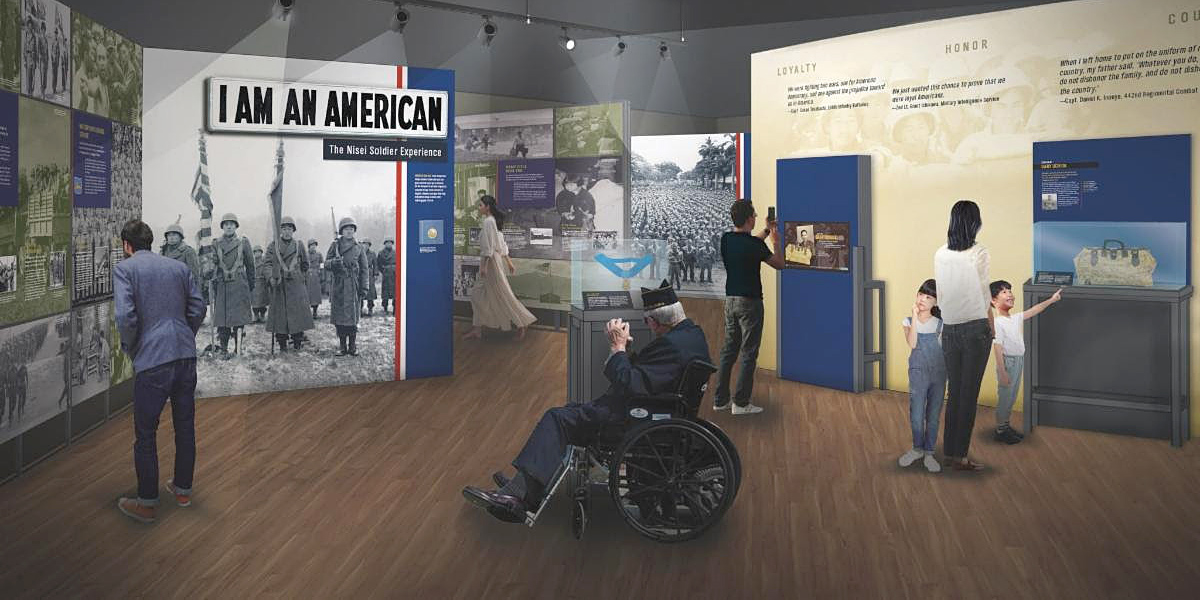
Washington, DC (September 18, 2024) — Today on Capitol Hill, U.S. Representatives Mark Takano and Jill Tokuda, White House Senior Advisor for Public Engagement Kota Mizutani, and 34th Chief of Staff of the United States Army, retired General Eric K. Shinseki, joined the presentation of plans for “I Am An American,” the first traveling exhibit of the National Museum of the United States Army, in partnership with the National Veterans Network and The Army Historical Foundation. The speakers shared the experience of family members who served in segregated units for Americans of Japanese ancestry during World War II and the significance of the U.S. Army choosing this often-overlooked community of soldiers for its first traveling exhibit.
Ms. Tammy Call, Director of the Museum, highlighted that the exhibit will travel to 11 cities over its five-year tour. The exhibit will highlight 25-35 wartime objects to represent the service of the United States Army’s 100th Infantry Battalion, 442nd Regimental Combat Team, and Military Intelligence Service. The first stop will be at the Presidio MIS Historic Learning Center in San Francisco in February 2026 before moving to the Bishop Museum in Honolulu, Oregon Historical Society in Portland, and Japanese American National Museum in Los Angeles. Additional venues will be announced at a later date.
Ms. Christine Sato-Yamazaki, Executive Director of the National Veterans Network, which is providing the historical expertise to develop the exhibit’s content, shared the exhibit’s design plans. The theme, “I Am An American,” was inspired by a photo taken by Dorothea Lange of an “I Am An American” sign placed on an Oakland, California storefront by Tatsuro Masuda on December 8, 1941, to declare his American identity. The exhibit will highlight the patriotism, courage, and selfless service of the Japanese American World War II Nisei soldiers who served courageously in the European and Pacific Theater while their families battled discrimination at home. Exploring five thematic areas, the 1,500-square-foot exhibit will present the national perspective of the Japanese American WWII soldier experience that includes the historical context of life in Hawaii and Wartime Relocation Authority camps.
“American soldiers of Japanese Ancestry delivered a powerful lesson in citizenship during World War II,” said Shinseki. “Their values––loyalty, courage, patriotism––are timeless statements about being American. Rising above fear and prejudice, they wrote an unrivaled battle history that remains legendary, even today. It’s an American story for the ages.”
World War II American soldiers of Japanese ancestry, known as Nisei soldiers, enlisted from the islands of Hawaii and ten Wartime Relocation Authority Camps that forcibly relocated 120,000 Japanese Americans during the war. An estimated 19,000 Nisei served in the European Theater as part of the 100th Infantry Battalion, 442nd Regimental Combat Team, which went on to become the most decorated unit in U.S. military history for its size and duration of service. Another 6,000 Japanese Americans served as translators and interpreters in the U.S. Army’s Military Intelligence Service.
The Army Historical Foundation is supporting the production of the traveling exhibit. A special gallery on the Nisei experience will be displayed at the National Museum of the United States Army at Fort Belvoir, Virginia, until 2025.
